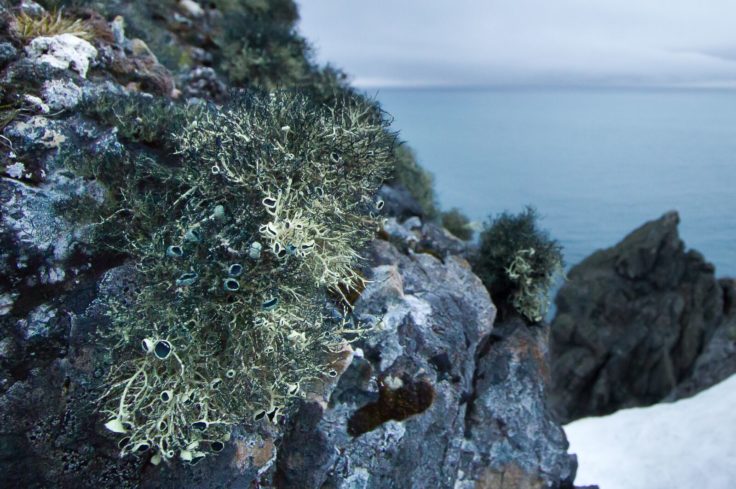PRESS RELEASE: Fungal diversity in Antarctic soils
Warmer temperatures stimulate diversity of soil fungi
Remote and covered by ice for much of the year the Antarctic Peninsula is home to hidden and dynamic communities of microbes that have an important role to play in the fragile ecosystems in which they are found. Writing in the journal Nature Climate Change this week (Mon 28th Sept), a team of scientists report how they have found a direct relationship between temperature and the diversity of Antarctic soil fungi.
Surface air temperatures along the Antarctic Peninsula rose by up to 2.8°C during the second half of the twentieth century. Among the physical manifestations of this warming have been glacier retreat and ice-shelf collapse. But other biological responses have also been observed such as an increase in plant growth. This new study investigates potential changes in a less apparent group of organisms, soil fungi. It suggests that there could be a rise of up to 27% in the diversity of fungi in Antarctic soils by 2100 if temperatures increase by a similar amount to what they did between the 1940s and beginning of this century. This will, in turn, have an effect on the turnover of nutrients in soils making them more productive.
Dr Kevin Newsham of British Antarctic Survey (BAS) and the University Centre in Svalbard, the lead author of the study, says: “Although the majority of fungi are microscopic they have important roles to play as decomposers and as symbionts (mutually dependent organisms that aid each other’s survival). We’ve observed that warmer Antarctic soils have more species of fungi in them than colder ones. If air temperatures along the Peninsula rise, it’s likely the number of species of fungi in the soils of the region will increase, partly due to the increased availability of water. This will influence important ecological processes such as the decay of plant remains effectively kick-starting plant communities by releasing more nutrients into the soil.”

The project, funded by the Natural Environment Research Council and the University of Queensland, used sequencing of DNA to measure the number of species of fungi present in 29 soil samples gathered from a 1,650 km-long transect along the Antarctic Peninsula during the austral summer of 2007/08. The sampling sites, some of which were previously uncharted, were visited by helicopter or small boats from HMS Endurance.
Professor David Hopkins, who led the overall project, and who is now based at the Royal Agricultural University, Cirencester, says: “We have embarked on the largest survey of soil organisms ever undertaken on the Antarctic Peninsula using a “space for time substitution” to predict how these ecosystems will change. This approach allowed us to compare different places on a long latitudinal/climatic gradient to predict the future effects of warmer and wetter conditions. Our work demonstrates the importance of large scale studies even when considering small scale organisms.”
Part of the reason for more fungal species being present in warmer soils is probably due to improved access to water, which, in combination with higher temperatures will enhance fungal metabolism, lengthening the period for which fungi are active each year and enabling them to disperse more easily.
“Relationship between soil fungal diversity and temperature in the maritime Antarctic” by Kevin Newsham et al, was published by Nature Climate Change